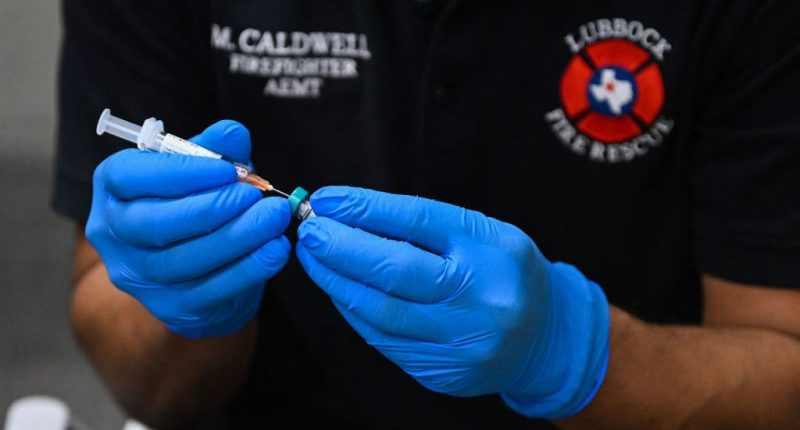Share this @internewscast.com

The Centers for Disease Control and Prevention (CDC) has announced that there are 935 confirmed cases of measles in several states across the nation.
That number is now officially more than triple the confirmed cases reported in all of 2024 (285 total), per the CDC.
The CDC also indicates that the actual number of measles cases in the U.S. likely surpasses the confirmed count of 935, as their report only considers officially verified cases and excludes potential ones. Astonishingly, 96% of those affected were either not vaccinated or had an uncertain vaccination history, as stated by the CDC.
Texas has reported the most confirmed cases, with the state’s health department documenting 683 instances, primarily concentrated in Gaines County close to the New Mexico border. Of these cases, approximately 450 involved children younger than 18, according to the Texas Department of State Health Services. Tragically, two of these cases, involving school-aged children, resulted in fatalities.
After Texas, New Mexico reported the most cases of any state, at 67. One resident of Lea County, by the Texas border, tested positive for measles after dying earlier this year.
In total, 29 states were home to residents with reported cases of measles in the CDC’s latest update: Alaska, Arkansas, California, Colorado, Florida, Georgia, Hawaii, Illinois, Indiana, Kansas, Kentucky, Louisiana, Maryland, Michigan, Minnesota, Missouri, Montana, New Jersey, New Mexico, New York, Ohio, Oklahoma, Pennsylvania, Rhode Island, Tennessee, Texas, Vermont, Virginia, and Washington.
The reason for these recent outbreaks, experts said earlier this year, can likely be traced to declining vaccination rates.
“Measles used to kill, you know, so many children, and we’re starting to see outbreaks again because parents are not getting their kids vaccinated,” Dr. Dale Bratzler, the dean of the University of Oklahoma’s Hudson College of Public Health, told Nexstar’s KFOR.
Amesh Adalja of Johns Hopkins University, speaking with the Agence France-Presse, had also said the Gaines County area in Texas had among the “lowest rates of vaccination in the state” — which he likened to “kindling for such outbreaks.”
Even a vaccination rate of below approximately 95% increases the risk of outbreaks, the World Health Organization warns, because herd immunity is only achieved at that rate.
“When the population rate of vaccination starts to fall below 95%, you’re going to have outbreaks,” Dr. Bratzler said.
The CDC, on its measles webpage, also noted that vaccination coverage among kindergarteners has dipped in the U.S., from 95.2% before the 2019 school year to 92.7% ahead of the 2023 school year.
In a briefing last month, Dr. William Moss, an epidemiology professor at the Johns Hopkins Bloomberg School of Public Health, said he believes measles will continue to spread as long as susceptible communities exist.
“I like to think of this like a forest fire with sparks spreading out,” Moss said. “If those sparks land in a community with low vaccine coverage, we’re going to see a larger measles outbreak. If it lands in a community with high vaccine coverage, we may only see one or a few cases.”
The best way to avoid transmission remains two doses of a measles or MMR vaccine, according to the CDC, the World Health Organization, and the majority of infectious disease experts.













